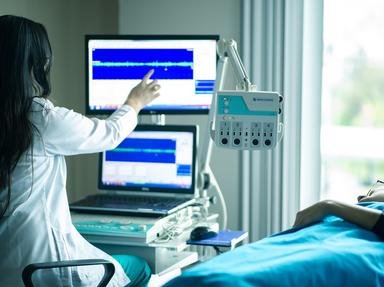Quiz Answer Key and Fun Facts
1. Who invented the electrocardiogram?
2. Who developed the first blood bank and a system for storing blood plasma?
3. Who invented the electroencephalogram?
4. Who invented the first stethoscope?
5. Which of the following was the co-inventor of the first wearable, external, battery-powered, transistorized cardiac pacemaker?
6. Who invented the first non-invasive, indirect method for measuring the blood pressure in humans?
7. Who invented disposable diapers?
8. Who invented Velcro?
9. Who was the first to invent an artificial heart valve and successfully implant it in a human beating heart?
10. Who invented the artificial kidney dialysis machine?
Source: Author
YOMD39
This quiz was reviewed by FunTrivia editor
crisw before going online.
Any errors found in FunTrivia content are routinely corrected through our feedback system.

